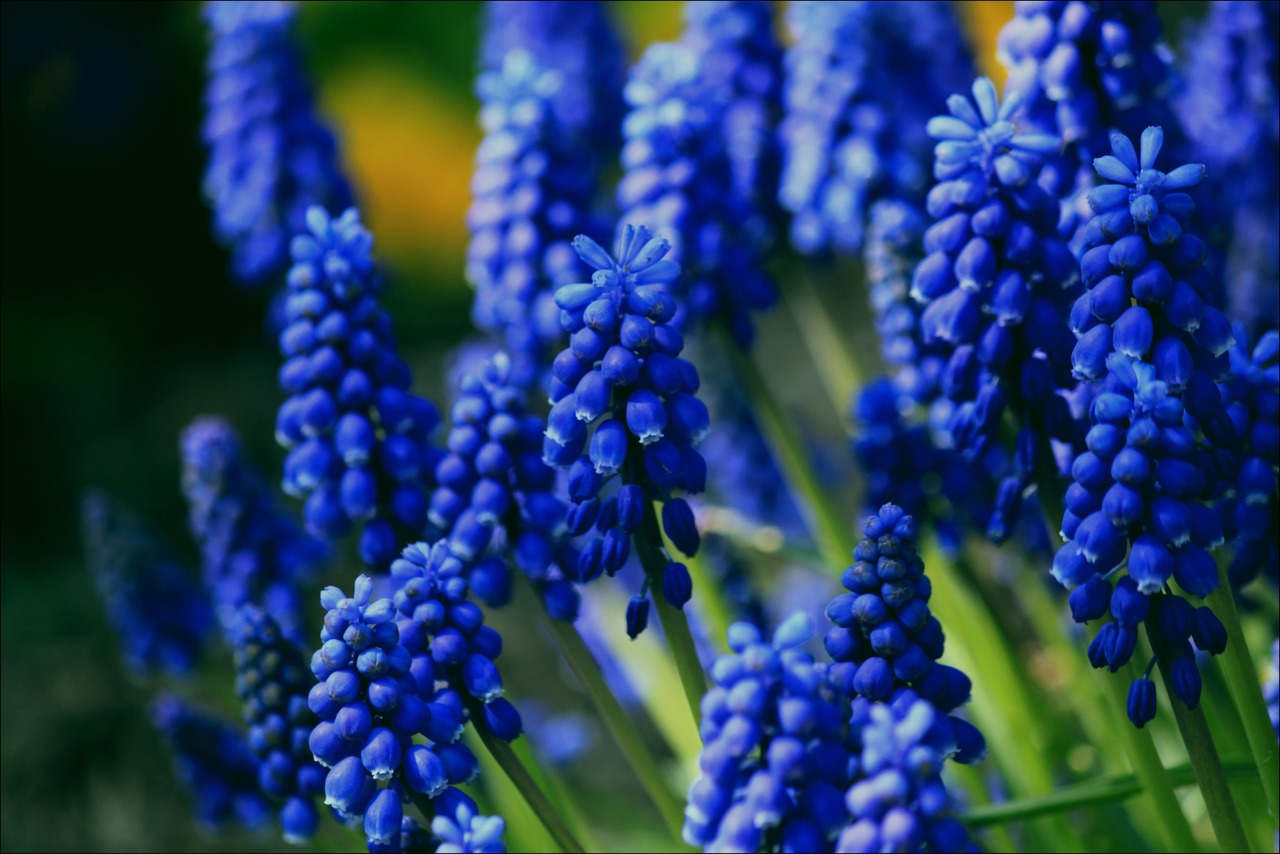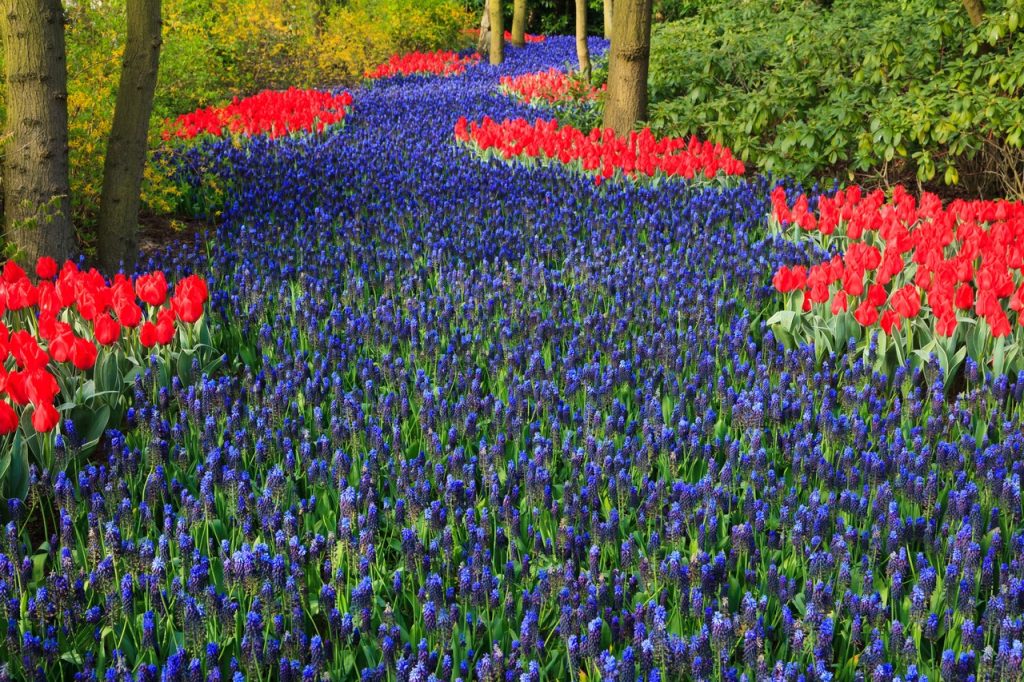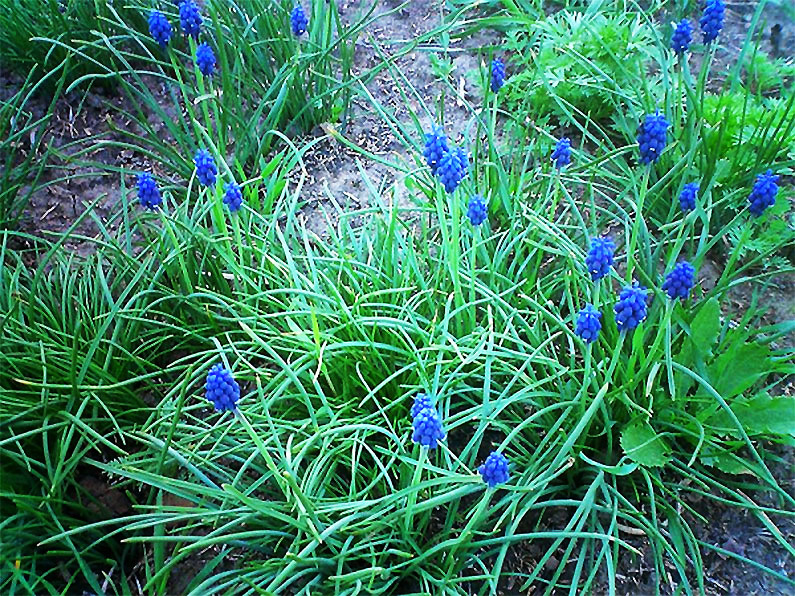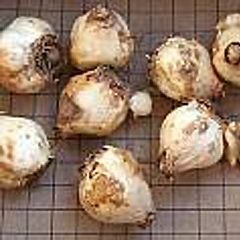Muscari or Grape Hyacinth, is a small bulb but perennial and suitable for planting around shrubs, roses, peonies and in other ground cover situation. It is also a beautiful addition to pots of bulbs or with plants that will not obscure it. Naturalizes and self sows if allowed to go to seed.
In the photo of the pot above, the muscari have returned as did the narcissus, tulips, and freesias after a waterless summer and great neglect The muscari bulbs are planted with their bases 5″ below the surface of the soil and 3-4 inches apart in the garden and closer in pots if desired.
At Keukenhoff Gardens in Holland, this is a famous display. A “River of Muscari” runs down a path between trees and other bulb insertions. I don’t know if they replace the muscari each year, but every time I’ve been there it has looked like this.
The Muscari bulb is a fat little one full of energy for a beautiful blue addition to your bulb and flower displays. Without summer water it will return and if allowed to set seed, will increase that way as well.





0 Comments